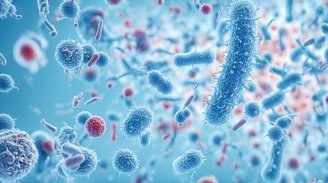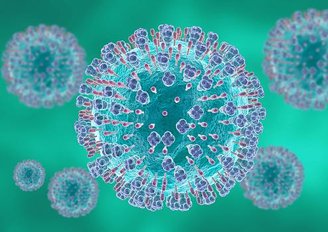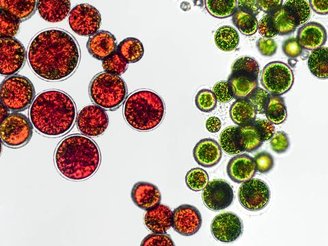We are accustomed to thinking that no form of life, or even nearly life, can survive in high-temperature, very acidic environments. But this seemingly sterile combination does not appear to affect the microorganisms found in Yellowstone..
Considered the largest volcanic system in North America, Yellowstone National Park in the United States is home to a very rich fauna, as well as famous geysers and hot springs.
The park’s hot, acidic cauldrons are notable for their yellowish color, characteristic of the presence of sulfur, but there is more to these waters. Some creatures have adapted to hostile conditions and resisted bravely in these cauldrons..
So what is the role of these organisms in such inhospitable environments? To answer these and other questions, a group of researchers dedicated themselves to taking a closer look at the life and half-life found in this hot, sulfurous home.
Viruses, algae and more
Samples collected from Lemonade Creek and the surrounding area showed the presence of a species of red algae called Cyanidiophyceae This inside Giant viruses interacting with these organisms create a unique system depending on the basis of the interaction..
Samples were collected in the cradle of the accident, in the soil and in the rocks. All centimeters apart but with complex and diverse systems of interactions.

In all, The researchers managed to isolate 36 different virus species in these habitats, with the megaviricetes class dominating.They cataloged their findings in a paper published in the journal Communications Biology.
The presence of viruses in these environments is not surprising, the researchers say, because where there are life forms, a viral population is expected. But the biggest finding lies in the dating of the emergence of these vital conglomerates.

The group believes that these organisms have been present there since the emergence of life on Earth, due to their similar characteristics to viral populations found near underwater volcanic vents. This means that, contrary to what one might assume about contamination and possible adaptation to the environment, these thermophilic viruses were “born” and developed in these areas.
Like this, These prehistoric viruses could be a key part of understanding how life evolved on EarthIt even gives clues about how life might exist beyond our planet.
From Yellowstone to space
First of all, I have to say that although it is a little scary, Classes identified in Yellowstone do not pose a risk to human health due to the discovery of new virusesOn the contrary, the study of these species could help develop health technologies and even have a special role in space exploration.
In health applications, studying and knowing how Yellowstone viruses interact with algae helps us understand how regulation occurs because some viruses attack bacteria found in these environments, preventing the algae from being destroyed.
Essentially, viruses invade bacteria and deposit their genetic material. This material multiplies indefinitely, causing the bacteria to “bloat” and die when they can’t handle the extra load. Studying the genetic code of viruses also gives us the keys to understanding how life has transformed and mutated over the centuries..
However, in addition to being a pathogen on Earth and, in some cases, a viable treatment against other organisms, the evolution and presence of these prehistoric viruses in hostile environments such as Yellowstone cauldrons and volcanic vents gives us clues about where to look for life or traces of it on other worlds. Could viruses have been the first colonizers?

Thus, the goal will be to make the hunt more efficient by collecting samples from within and around volcanic soils. a more accurate prediction of new life forms due to the characteristics observed on our own planet. And according to belief, if there are viral traces, it means that life exists or is being produced. Who knew that viruses could be so useful instead of just being a nuisance?
Analysis and studies will continue, and perhaps soon we will hear more about the role of viruses in the development of life on Earth.
If you love examining the universe under the microscope, take the opportunity to get to know the super-powerful bacteria at the bottom of the sea. Stay tuned to TecMundo for more content related to science and scientific curiosities!
Source: Tec Mundo
I’m Blaine Morgan, an experienced journalist and writer with over 8 years of experience in the tech industry. My expertise lies in writing about technology news and trends, covering everything from cutting-edge gadgets to emerging software developments. I’ve written for several leading publications including Gadget Onus where I am an author.











